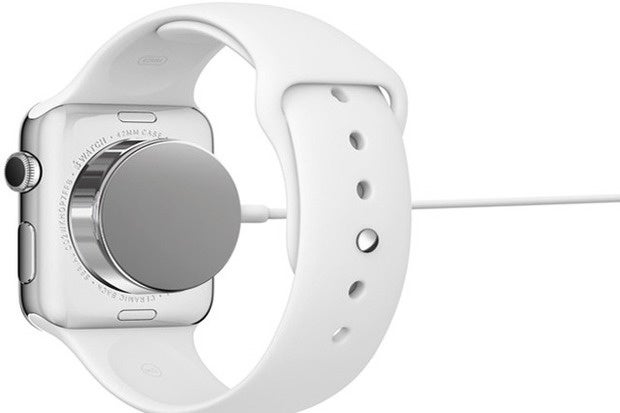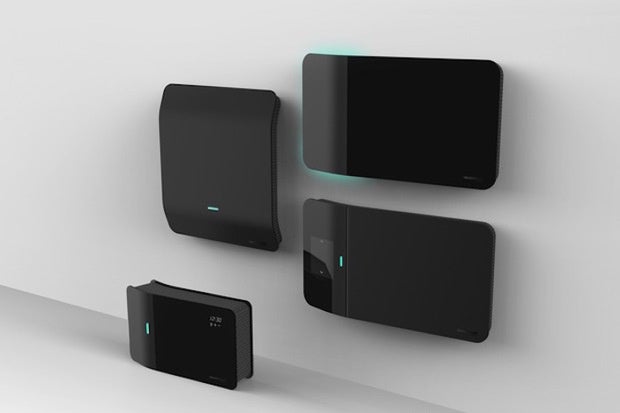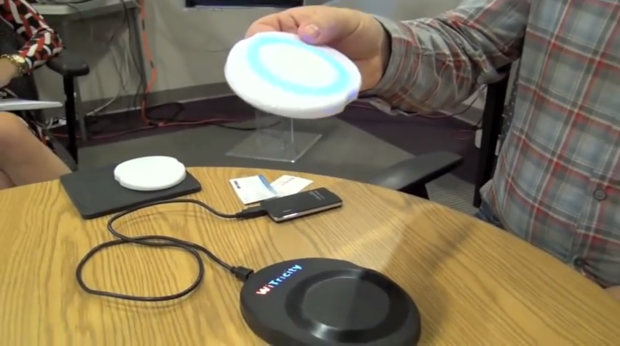Why is Apple avoiding wireless charging?
Why is Apple avoiding wireless charging?

Credit: Apple
The list of smartphones that offer wireless charging is enormous, but Apple shunned the technology with iPhone 6 and Apple Watch
First, the iPhone 6 arrived last year without it. Now, comes the Apple Watch. Same story. Wireless charging seems to be something Apple’s going to wait on even as major mobile manufacturers adopt it.
Last week, Samsung announced that its Galaxy 6 and S6 Edge smartphones will have wireless charging. Two years ago, the Windows Phone 8-based Lumia 920smartphone had wireless charging. So it’s not as if it’s not becoming a more mainstream technology.
The list of smartphones that offer wireless charging is enormous.
Some even speculated the iPhone 5 would have wireless charging when it came out more than two years ago.
From a purely technical perspective, the Apple Watch uses wireless charging in the form of tightly coupled magnetic induction. Butt he device is still tethered to a charging cord. It’s the same kind of technology was used more than a decade ago to charge electric toothbrushes. In the Apple Watch’s case, a user must attach the power cord magnetically to the rear of the mobile device.
 IKEA
IKEAConsidering the daily lifespan of the Apple Watch’s battery — 18 hours — a wearer will have to plug the watch in at least once a day for charging. Big deal? Well, imagine having to plug your typical wristwatch in once a day.
The advantage to loosely coupled magnetic resonance technologies — found in a number of top-selling charging pads — is that a user need only drop the mobile device onto a surface to charge it. There’s no need to worry about the X- or Y-axis placement of a device. You can also charge more than one device at the same time.
Furniture retailers, such as IKEA, have seen the advantage to wireless charging and are are beginning to include the technology in coffee tables and nightstands. Carmakers are also embedding wireless charging in their vehicles.
William Stofega, a mobile phone analyst with IDC, believes Apple is still waiting on the wireless charging standards wars to be settled before choosing a winner.
Currently, there are three major charging standards that the mobile industry is supporting: Qi, which is supported by the Wireless Charging Consortium (WPC); Rezence, which is backed by Alliance for Wireless Power (A4WP); and Powermat, which is backed by the Power Matters Alliance (PMA).
The A4WP and the PMA have joined forces against the larger WPC and now share their specifications, which allows wireless charging manufacturers to use both loosely coupled and tightly coupled standards as well as data-sharing technology in products.
Apple may also be waiting on a specification that it feels is mature enough to meet Apple’s rigorous build standards and is something that customers see as a real value.
Stofega believes Apple is sitting on the sidelines to see which technology proves to be the most robust and will undoubtedly add to the company’s bottom line. Apple doesn’t typically adopt new functionality at face value; the company adopts venerable tech and then adds its own twist.
 Energous
EnergousFor example, Apple Pay uses near field communication (NFC) to transmit credit card data from an iPhone 6 or Watch to a store’s payment terminal. NFC has been around more than a decade, allowing communication across distances less than 3.9-in.; it’s considered a secure and robust standard. Even so, Apple added tokenization to the technology to make it more secure.
“They want to bring something to table that helps them sell a product, but in a way where they can say, ‘We’re the only guys who have this,'” Stofega said.
So while Apple may eventually adopt resonant wireless charging in its mobile devices, expect it to also add its own special sauce.
Stofega is hopeful that Apple will adopt even more promising wireless charging technologies that allow objects to charge over distance.
Imagine walking into a room in your house or office, or entering your vehicle, and your mobile device automatically begins its cordless charging.
WiTricity, for example, uses the Rezence specification but in a way that allows enabled devices to charge from distances of an inch to many feet away. With devices called “repeaters.” the magnetic field can be boosted to even greater distances. Intel and Toyota have signed licensing agreements with WiTricity to support the technology.

Computerworld
The Pleasanton, Calif.-based Energous announced its WattUp transmitter that works like a wireless router, sending radio frequency signals to charge enabled mobile devices. A small RF antenna in the form of PCB board, an ASIC and software make up the wireless power receivers.
A single WattUp transmitter can charge up to 24 devices, all under software control that enables or disables charging. A WattUp transmitter can stream 4 watts within a 5-foot radius. At a range of five to 10 feet, that power drops to 2 watts per device; at 10 to 15 feet, the router puts out 1 watt per device (4 watts total). Still that would be plenty to charge a small wearable like the Apple Watch.
“These technologies are really cool, but they haven’t been demonstrated on a production level,” Stofega said. “If there’s a way for Apple to…take the next step in wireless charging, like WiTricity or Energous, they would. But, they certainly don’t want to offer the user any experience that damages their brand name.”
